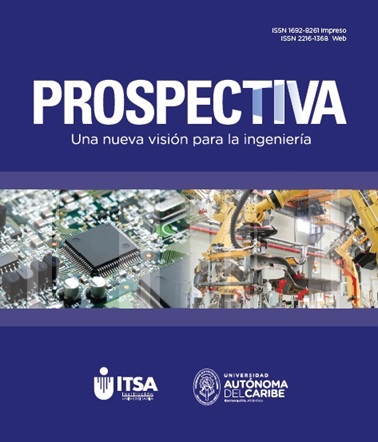Development of a Chatbot as an Intelligent Personal Assistant for Teaching and Learning Data Structures
DOI:
https://doi.org/10.15665/rp.v22i1.3437Palabras clave:
Chatbot; Data Structures; Intelligent Personal Assistant; Artificial Intelligence; Educational AssistantResumen
The realm of education is witnessing a burgeoning array of AI applications, with one noteworthy addition being Chatbot technology. This innovation has been harnessed to streamline both teaching and administrative functions. This paper introduces HexBot, a Chatbot meticulously crafted to enhance the learning journey of students enrolled in a data structures course at an esteemed educational institution. The development of HexBot entailed an exhaustive exploration of cutting-edge practices, methodologies, and apt tools. Additionally, a comprehensive user survey was conducted to ascertain preferences and requirements pertaining to the Chatbot's utilization for this specific purpose. HexBot was successfully implemented on the SnatchBot platform and seamlessly integrated into a dedicated Telegram channel. Encouragingly, the outcomes underscore its efficacy in empowering college students to independently access precise information about data structures within the realm of computer science, thereby obviating the necessity for human intervention.
Citas
S. M. Lee and D. Lee, “‘Untact’: a new customer service strategy in the digital age,” Serv. Bus., vol. 14, no. 1, pp. 1–22, 2020.
C. Henríquez, F. Briceño, and D. Salcedo, “Unsupervised Model for Aspect-Based Sentiment Analysis in Spanish,” IAENG Int. J. Comput. Sci., no. 3, pp. 430–438, 2019, [Online]. Available: http://www.iaeng.org/IJCS/issues_v46/issue_3/IJCS_46_3_06.pdf.
E. Cambria and B. White, “Jumping NLP curves: A review of natural language processing research,” IEEE Computational Intelligence Magazine. 2014, doi: 10.1109/MCI.2014.2307227.
B. A. Shawar and E. Atwell, “Chatbots: are they really useful?,” in Ldv forum, 2007, vol. 22, no. 1, pp. 29–49.
J. Sjöström and M. Dahlin, “Tutorbot: A Chatbot for Higher Education Practice,” in Lecture Notes in Computer Science (including subseries Lecture Notes in Artificial Intelligence and Lecture Notes in Bioinformatics), 2020, vol. 12388 LNCS, pp. 93–98, doi: 10.1007/978-3-030-64823-7_10.
I. V Serban et al., “A deep reinforcement learning chatbot,” arXiv Prepr. arXiv1709.02349, 2017.
A. Xu, Z. Liu, Y. Guo, V. Sinha, and R. Akkiraju, “A new chatbot for customer service on social media,” in Proceedings of the 2017 CHI conference on human factors in computing systems, 2017, pp. 3506–3510.
T. Okuda and S. Shoda, “AI-based chatbot service for financial industry,” Fujitsu Sci. Tech. J., vol. 54, no. 2, pp. 4–8, 2018.
D. C. Ukpabi, B. Aslam, and H. Karjaluoto, “Chatbot adoption in tourism services: A conceptual exploration,” in Robots, artificial intelligence, and service automation in travel, tourism and hospitality, Emerald Publishing Limited, 2019.
K. N. Lakshmi, Y. K. Reddy, M. Kireeti, T. Swathi, and M. Ismail, “Design and implementation of student chat bot using AIML and LSA,” Int. J. Innov. Technol. Explor. Eng., vol. 8, no. 6, pp. 1742–1746, 2019.
P. Smutny and P. Schreiberova, “Chatbots for learning: A review of educational chatbots for the Facebook Messenger,” Comput. Educ., vol. 151, p. 103862, 2020.
E. Adamopoulou and L. Moussiades, “An overview of chatbot technology,” in IFIP International Conference on Artificial Intelligence Applications and Innovations, 2020, pp. 373–383.
S. Yang and C. Evans, “Opportunities and challenges in using AI chatbots in higher education,” in Proceedings of the 2019 3rd International Conference on Education and E-Learning, 2019, pp. 79–83.
N. Sandu and E. Gide, “Adoption of AI-Chatbots to enhance student learning experience in higher education in India,” in 2019 18th International Conference on Information Technology Based Higher Education and Training (ITHET), 2019, pp. 1–5.
H. T. Hien, P.-N. Cuong, L. N. H. Nam, H. L. T. K. Nhung, and L. D. Thang, “Intelligent assistants in higher-education environments: the FIT-EBot, a chatbot for administrative and learning support,” in Proceedings of the ninth international symposium on information and communication technology, 2018, pp. 69–76.
C. Henriquez, G. Sánchez-Torres, and D. Salcedo, “Tashi-Bot: A Intelligent Personal Assistant for Users in an Educational Institution,” 2021.
C. W. C and A. Ade-Ibijola, “Python-Bot: A Chatbot for Teaching Python Programming.”
Descargas
Publicado
Número
Sección
Licencia
Derechos de autor 2024 Carlos Henríquez Miranda, Dixon David Salcedo Morillo, Albeiro Cortés-Cabezas

Esta obra está bajo una licencia internacional Creative Commons Atribución-NoComercial-SinDerivadas 4.0.
Los autores/as que publiquen en esta revista aceptan las siguientes condiciones:
- Los autores/as ceden los derechos de autor y dan a la revista el derecho de la primera publicación, con el trabajo registrado con la licencia de atribución de Creative Commons, que permite a terceros utilizar lo publicado siempre que mencionen la autoría del trabajo y a la primera publicación en esta revista.
- Los autores/as pueden realizar otros acuerdos contractuales independientes y adicionales para la distribución no exclusiva de la versión del artículo publicado en esta revista (p. ej., incluirlo en un repositorio institucional o publicarlo en un libro) siempre que indiquen claramente que el trabajo se publicó por primera vez en esta revista.
- Se permite y recomienda a los autores/as a publicar su trabajo en Internet (por ejemplo en páginas institucionales o personales) antes y durante el proceso de revisión y publicación, ya que puede conducir a intercambios productivos y a una mayor y más rápida difusión del trabajo publicado (vea The Effect of Open Access).
Instrucciones para el llenado de la Certificación de Originalidad y la Cesión de Derechos de Autor.
- Haga click aquí y baje el formulario de Certificación de Originalidad y la Cesión de Derechos de Autor.
- En cada uno de los campos para rellenar haga click y complete lo correspondiente.
- Una vez llenos los campos, copie al final su firma escaneada o firma digital. Favor ajustar el tamaño de la firma en el formulario.
- Finalmente, lo puede guardar como pdf y enviarlo a través de la palataforma OJS, como archivo complementario.
Si tiene dudas contáctenos, por favor.


